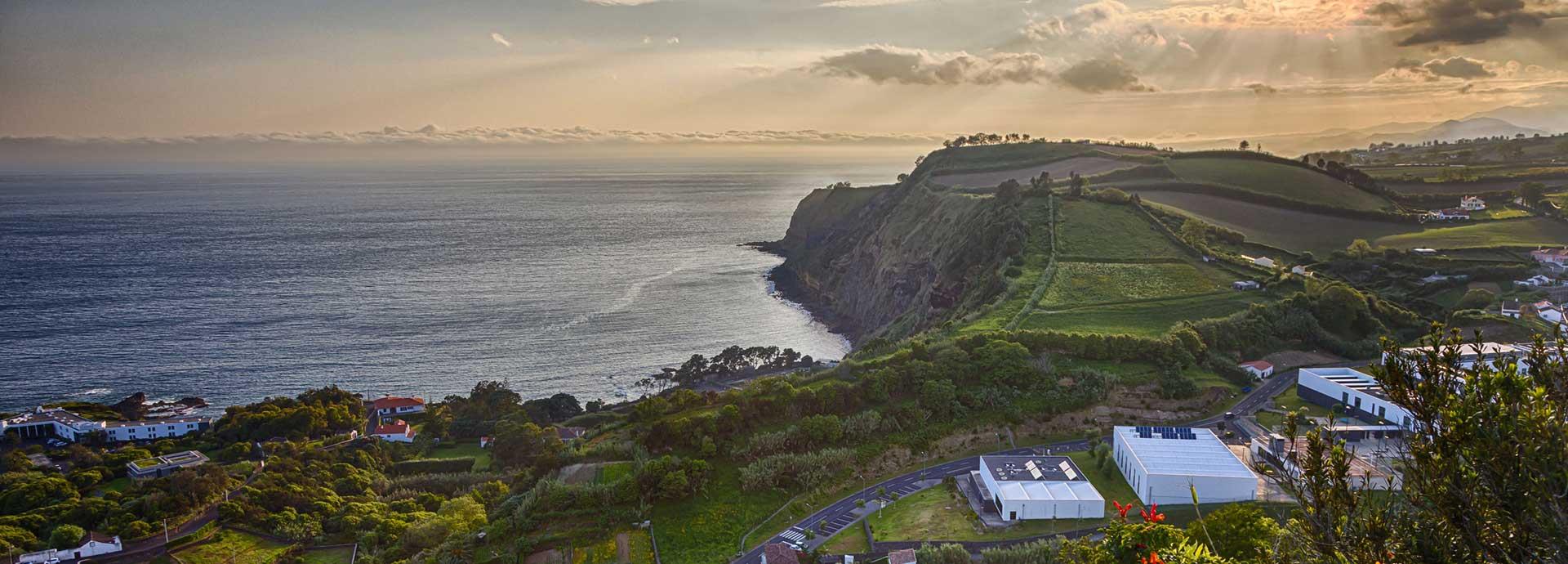

Off the coast of Portugal, on the volcanic ‘White Islands’ of Azores with a population of less than 5,000, life proceeds at an easy pace. Most people living here are occupied with traditional tasks such as agriculture, grape cultivation and dairy farming. And while island life sounds idyllic, it is also a fact that this life would be impossible without sufficient and reliable power.
The ‘White Islands’, much like other island nations and cities have traditionally had no option but to depend on external sources for their energy fuel. The consequences include routinely importing fossil fuels to power their energy grid while dealing with the high costs and relative unreliability of supplies.
But all this is set to change. The new Graciosa Hybrid Renewable Power Plant with its integrated 6 MW/3.2 MWh energy storage management system will soon be able to supply 1 MW of solar and 4.5 MW of wind power to the local electricity grid, reducing the island’s reliance on imported fossil fuels and significantly cutting down on greenhouse gas emissions.
This new hybrid renewable power plant, is being managed by GEMS, an energy management software system developed and installed by Wärtsilä. The result: an integrated power system combining renewables, engines, and energy storage that will deliver both economic and environmental benefits.
The GEMS software is among the most advanced in the world, using artificial intelligence (AI) and big data to control and balance multiple energy assets including wind, solar, and diesel generation. Simply put, the GEMS software automatically optimises energy generation based on load patterns and weather forecasts, increasing the use of renewable energy and decreasing the cost of diesel power generation, while improving the reliability of the island’s energy grid.
This will not only make the UNESCO classified ‘World Biosphere Reserve’ island greener by boosting renewable energy consumption from 15% to 65%, but also eliminate the need for 17,000 litres of diesel per month. This reduces the island’s carbon footprint and greatly impacts the cost of energy going forward.
The plant will be commissioned in 2019. The execution of this project has been complex and depended on a number of things which had to be executed in phases.
Nearing the finishing line
According to Luke Witmer, lead research engineer at Greensmith Energy, “all the phases are near completion.”
“We are wrapping up the development of a new operation logic and safety procedure that is based on the site’s asset and equipment combinations and also getting all the pre-testing of software logic done with the various equipment providers.”
For Wärtsilä, the project is quite special as it is their first big island grid with as many as four different types of assets: diesel generation sets, wind, solar, and storage. “Each asset by itself is not new to Greensmith Energy, but the challenge was having all of these complex pieces come together into one project,” says Witmer.
His team oversees the functional specifications, as well as designs and implements both the renewable and load forecasts with support from third-party forecasting service provider(s).
Difficult to dispatch
The real challenge, Witmer says, was in integrating and executing the project in a way that maximised the renewable energy utilisation within a long list of on-ground constraints.
“On Graciosa, our breakthrough is that GEMS does both individual asset control as well as system balancing to maximise renewable energy penetration, something traditionally done by system operators, either large ISOs or RTOs,” he says.
Greensmith Energy is also working on the optimisation component, which means getting the system to perform at its best, by following the strict diesel generator constraints (such as minimum run times and minimum loading levels) while observing N-1 reliability metrics and more, to minimise the cost of serving the load.
“The tricky part is that most places that have reached high renewable energy penetrations have a more dispatchable type of renewable generation such as biomass or geothermal. Wind and solar, on the other hand, are among the least dispatchable as they are the most intermittent, which is an added challenge at this level of renewable energy penetration,” says Witmer.
Harmonising all levers and gears
Integration is indispensable for such island projects and Witmer believes that leveraging integration expertise is “the only way” to achieve a robust and reliable system architecture, to operate both safely and optimally.
In the future, Greensmith Energy expects the Graciosa Hybrid Renewable Power Plant to cover over 60% of the island’s yearly energy needs. The aim is to reach a stage when all of the diesel generators can be turned off and the island runs on 100% renewable energy.
This could be done for a significant portion of time, up to several successive days in some cases, depending on the solar and wind conditions. As per Witmer’s calculations, if that happens, the savings (depending on fuel costs) could be as high as USD 3.15 million every year.
That is promising if the formula can be applied to other islands and geographies. John Jung, former CEO of Greensmith Energy believes it can.
“The transition of the energy industry is really about the start of a golden age of computer technology, which maximises the efficiency of our assets. Graciosa is a great example, but it is also scalable. Imagine a similar system in continental Australia, and you can see the potential of these solutions,” he says leaving us with some food for thought.


